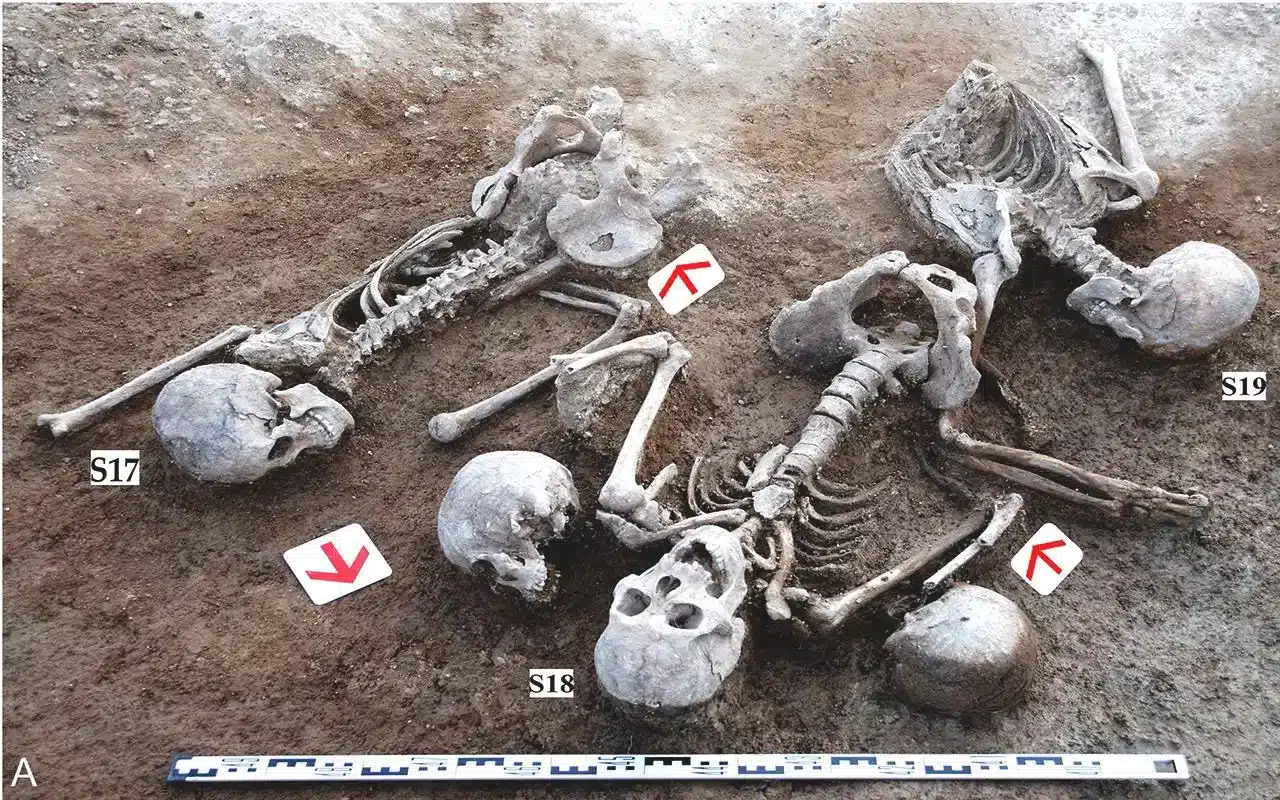Ancient Burial Site Reveals Cinnabar-Stained Teeth

A remarkable archaeological discovery in northwestern China has unveiled the remains of a woman whose teeth were uniquely painted with cinnabar, a toxic red mineral. This burial site, located in Turpan City, Xinjiang, dates back between 2,200 and 2,050 years and is situated along a significant Silk Road trade route. The remains have been identified as belonging to the Gushi people, renowned for their equestrian culture. This finding marks the first documented instance of cinnabar being applied to human teeth in ancient societies.
First Recorded Case of Cinnabar on Teeth
A recent study published in *Archaeological and Anthropological Sciences* highlights this unprecedented discovery. According to Qian Wang, a professor of biomedical sciences at Texas A&M University College of Dentistry, no other ancient burial site worldwide has shown evidence of this practice. The analysis utilized spectroscopy methods to confirm that the red pigment was indeed cinnabar, mixed with an animal protein, likely egg yolk or egg white, to aid in its application. This unique finding raises intriguing questions about the cultural practices of the Gushi people and their use of materials in burial rituals.
Possible Cultural and Ritualistic Significance
The reasons behind the application of cinnabar on the woman’s teeth remain speculative. Experts propose various theories, suggesting that it may have been linked to cosmetic practices, social status, or even shamanistic rituals. Other burial sites in the Xinjiang region have revealed evidence of facial paintings and tattoos, indicating a broader tradition of body adornment. Notably, the Xinjiang area lacks natural cinnabar deposits, suggesting that the mineral was imported from regions such as West Asia, Europe, or other parts of China, further emphasizing the cultural exchanges along the Silk Road.
Health Risks of Cinnabar Exposure
Despite the intriguing cultural implications, the use of cinnabar poses significant health risks. Li Sun, a geology professor at Collin College, pointed out the dangers associated with mercury exposure, which can lead to neurological damage. However, tests on the woman’s bones revealed no traces of mercury poisoning, leaving the frequency and duration of her exposure uncertain. This aspect of the discovery underscores the need for further research into the health impacts of ancient practices involving toxic substances like cinnabar.
Observer Voice is the one stop site for National, International news, Sports, Editor’s Choice, Art/culture contents, Quotes and much more. We also cover historical contents. Historical contents includes World History, Indian History, and what happened today. The website also covers Entertainment across the India and World.

